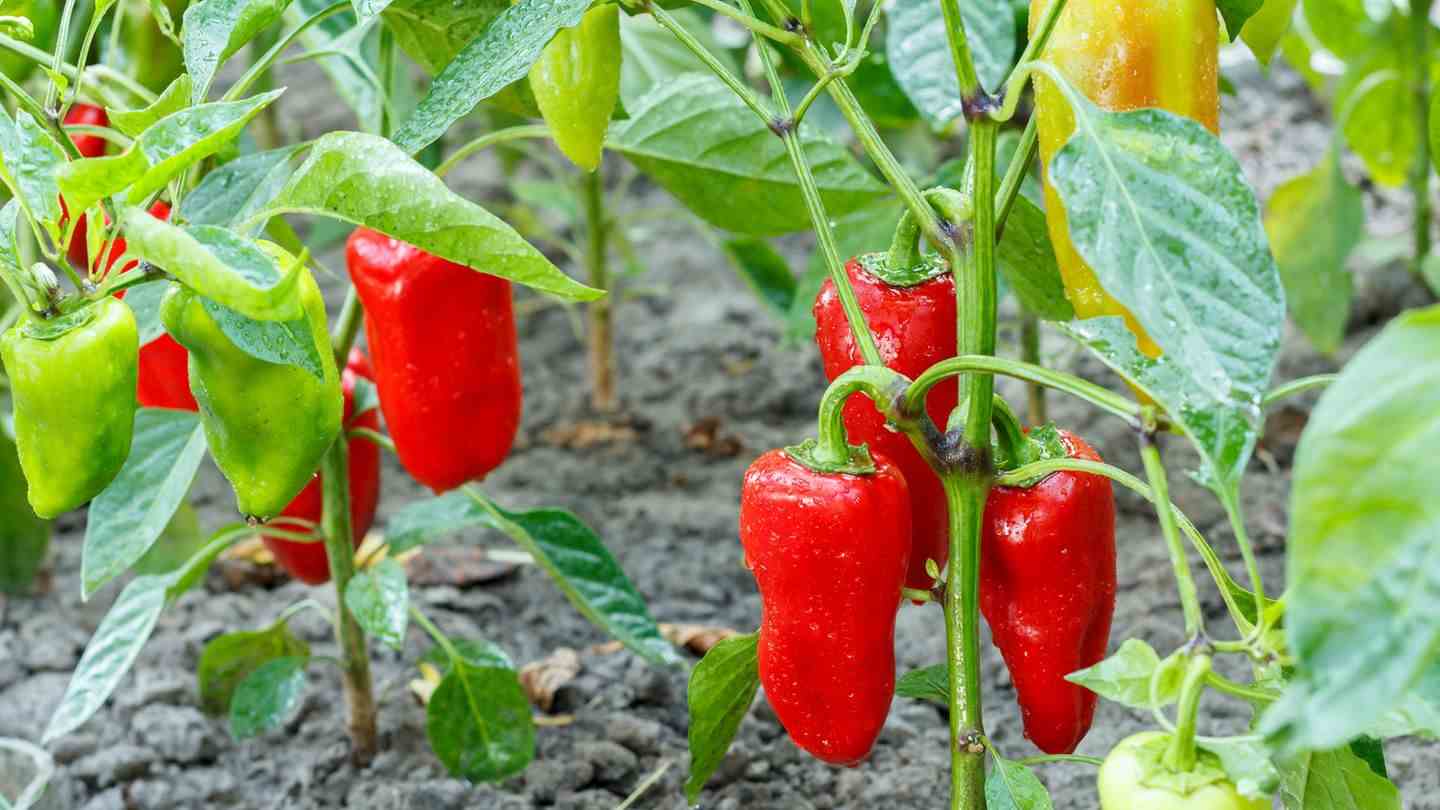garden tips
Planting peppers: How to get the sensitive sun worshipers to ripen
Peppers are anything but easy to care for: They freeze quickly, are constantly thirsty, but the crunchy vegetables don’t like rain at all. A real challenge for many hobby gardeners. With these tricks you get the best out of the vitamin C bombs.
As with planting zucchini, the ice saints are also an important marker when cultivating peppers. The nightshade family even likes it a little warmer than their pumpkin-like bed neighbors. In 2022, the dreaded frosty nights in mid-May did not come to the delight of all garden lovers. It is prepared for the small, large, pointed, round, hot, sweet and above all colorful fruits that once came to Europe from South America. In this article you will learn how to prefer peppers on the windowsill, what is important when moving outdoors and what mistakes should not be made when caring for them.
Planting peppers: from pre-cultivation to sowing
If you know that peppers come from very warm and humid regions, it doesn’t take a lot of imagination and even less gardening know-how to figure out that the plants like exactly these conditions best in our latitudes. However, it is not true that the popular vegetable inevitably only grows big in the greenhouse. Although a lot of paprika varieties have much better cards in the sheltered from rain and well-tempered houses. Especially the young plants that have been painstakingly cultivated on the windowsill at home. And that’s how it works.
- Depending on your taste and preferences, buy pepper seeds in specialist shops
- In March, distribute several seeds in a planting tray and cover thinly with soil
- Water the seeds and cover the bowl with a transparent hood
- Place the preculture in an evenly warm and bright location (approx. 25 degrees Celsius)
- After approx. 4 weeks prick out small pepper plants and distribute them in pots
- Move young plants to an unheated greenhouse from mid-April
- Alternative: plant after the ice saints in a sunny bed with humus-rich soil
Incidentally, the vast majority of paprika varieties do not have it that close either. That’s why you should pay attention to the distances when planting out, whether in a bed or greenhouse. So should between the plants about 50 centimeters “safety distance” be granted. In the best case and with the appropriate bed size, the rows are even about 60 centimeters apart. Friends of the balcony garden are best off grabbing a flower pot that is as large as possible and embedding the plants in ordinary vegetable soil. You also have significantly better chances of a rich harvest here if the bucket is protected from the rain, i.e. one roof over your head Has. Similar to tomatoes, rain is also the gateway for various fungal cultures that transmit diseases in peppers.
If you want to skip the steps outlined so far, it is best to use the already productive pepper plant (e.g. the exotic heart). But the same applies to them: keep them warm and, if possible, safe from the rain.
This is how you help the garden diva on the jumps
Cultivating peppers requires a lot of patience. In contrast to tomatoes, the crunchy vegetable grows very slowly. Some liquid fertilizer every two weeks and daily watering (especially in the summer months) are therefore mandatory. A layer of lawn mulch can also reduce evaporation and keep the soil toasty and warm. The feel-good temperature of the vast majority of wild peppers is between 25 and 28 degrees. Temperatures that in our latitudes can only be achieved with a greenhouse. If you don’t have space for a greenhouse, you need some imagination.
Protect peppers (and tomatoes) from cold and rain
- Get yourself Foil protective hoods and pull them over the individual plants. As a rule, these hoods are perforated so that the vegetables are sufficiently ventilated. The films not only keep the heat in, they also protect the sensitive peppers and tomatoes from the rain.
- Use one cold frame, to protect the young plants from cold and rain in the first days and weeks after moving outside. As soon as the plants are too tall, tomato or pepper hoods help again.
- The third option to help peppers (or tomatoes) grow while protecting against disease is a foil greenhouse. They are available in different sizes and shapes. For peppers, the so-called offers tunnel greenhouse on. Practical: foil greenhouses are fixed and can be fixed to the ground with small anchor hooks. Small ventilation windows prevent tropical temperatures, which the pepper plants also dislike in the long run.
You might also be interested in:
This article contains so-called affiliate links. There is more information here.


